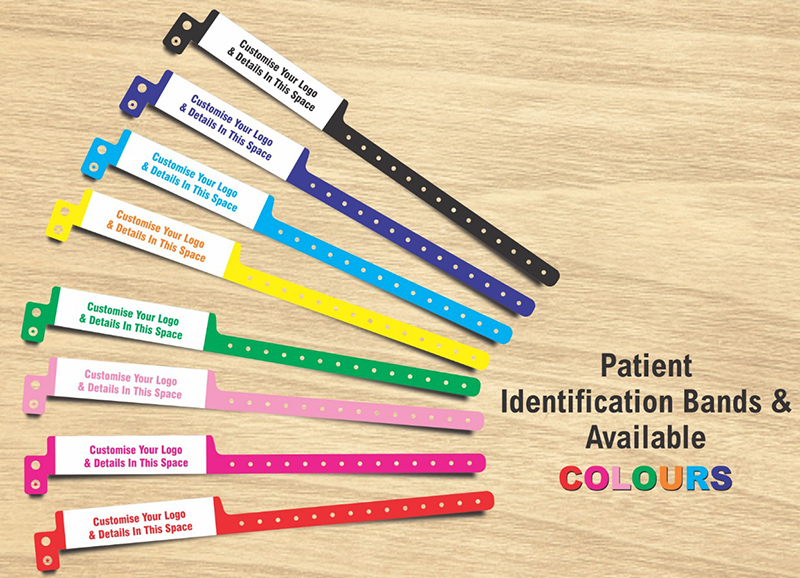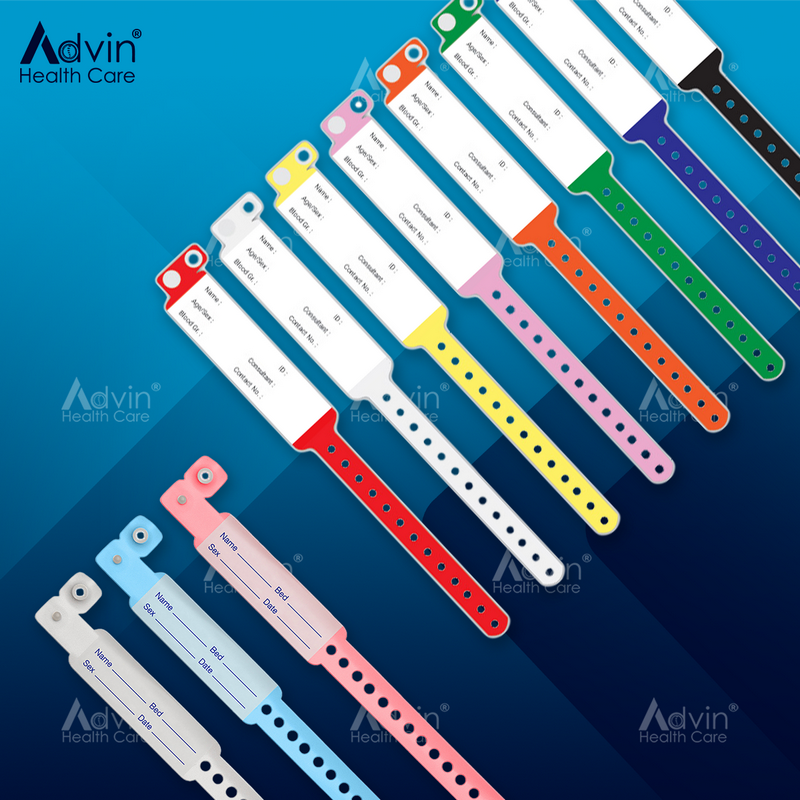A Comprehensive Overview to Patient Identification Band as a Vital Medical Supply
In the large landscape of healthcare, Patient Identification bands have become a vital device (patient identification band). These bands, brimming with crucial information, work as the very first line of protection versus medical errors and guarantee seamless Patient treatment. As we start to check out these medical products comprehensive, we uncover the complexities of their design, use, and influence on Patient safety and security, while meaning the guarantee they hold for future clinical techniques
The Role of Patient Identification Bands in Healthcare
The significance of Patient Identification bands in health care can not be overemphasized. These easy wristbands offer as the primary technique of ensuring Patient identity, lowering the risk of medical mistakes and improving general Patient safety. Patient Identification bands offer a system of balances and checks, a fail-safe versus prospective blunders, and a constant tip of the private behind the therapy.
Decoding the Info on Patient Identification Bands
While they may seem straightforward at a glance, Patient Identification bands lug essential details that can greatly impact the program of an individual's care. These bands commonly display the Patient's name, date of birth, and an one-of-a-kind identifier, such as a clinical document number. Additionally, the barcode discovered on these bands can be checked to access the Patient's electronic health document, providing a wealth of information to health care providers.
Various Types of Patient Identification Bands: A Closer Look
In the realm of Patient Identification, there are a number of types of bands that serve unique functions. Barcode Identification Bands, RFID Tag-based Bands, and Color-Coded Patient Bands are the primary groups - patient identification band. Each type provides one-of-a-kind functions and benefits, which will certainly be examined in the complying with areas
Barcode Identification Bands
Supplying a substantial improvement in Patient safety and security, barcode Identification bands have actually ended up being an important instrument in the clinical area. These bands shop important Patient information in a barcode format that's promptly accessible with a scan. Significantly, these bands have significantly minimized clinical errors and improved Patient safety.
RFID Tag-based Bands
One more innovative strategy in Patient Identification is the use of RFID Tag-based bands. These bands utilize Radio Frequency Identification (RFID) modern technology to provide a protected type of Patient Identification. Regardless of these difficulties, RFID tags use significant potential for improving Patient safety and security and performance in healthcare.
Color-Coded Patient Bands
Color-coded Patient bands stand as a straightforward yet effective tool in Patient Identification. These bands, widespread in health centers and facilities, use different colors to suggest numerous Patient allergic reactions, dangers or problems, making sure instant acknowledgment by health care specialists. A red band generally symbolizes an allergic reaction, while yellow indicates an autumn threat. These bands are created to be appreciable and easily visible, even in high-stress circumstances. This immediate visual cue enables for timely, exact care, reducing the capacity for medical errors. Nevertheless, it's vital that personnel are extensively learnt the color definitions, as complication can bring about major consequences. Therefore, the color-coded Patient band system is a crucial component of Patient safety and security and reliable medical care shipment.

Use of Patient Identification Bands: Protocols and procedures
In medical care setups, the usage of Patient Identification bands plays a crucial function in making certain Patient security and decreasing clinical errors (patient identification band). These bands, generally made of durable, hypoallergenic product, are affixed to the Patient's wrist or ankle, displaying crucial details such as name, day of birth, and an one-of-a-kind identifier. In published here elderly treatment, 2 bands might be used for people with dementia to ensure proper Identification.
The Effect of Identification Bands on Patient Safety
Identification bands play an essential duty in keeping Patient security in medical care settings. Their usage can substantially reduce medical mistakes by making certain that the appropriate Patient obtains the right therapy. These easy devices contribute to enhancing the top quality of care by offering an added layer of verification to Patient identifications.
Minimizing Clinical Mistakes
Patient Identification bands have arised as an invaluable tool in dramatically minimizing these errors. Most importantly, these bands ensure that every Patient is appropriately matched with their clinical records, tests, and therapies, thus considerably lowering the risk of medical mistakes. By ensuring exact Patient Identification, these bands contribute to enhanced Patient safety and security, building trust and confidence in the medical care system.
Making Sure Proper Therapy
Guarding Patient security, Identification bands play an essential function in ensuring the correct management of therapies. They use an easy yet reliable technique for appropriately recognizing clients and matching them to their clinical records. This reduces the threat of treatment mistakes, especially in high-pressure situations where errors can have serious consequences. These bands include crucial information such as the Patient's name, day of birth, and special Identification number. They promote exact cross-referencing with digital health records, prescription orders, and procedural routines. In consequence, the possibility of misdiagnosis, drug mistakes, or procedural mix-ups is significantly minimized. Basically, Patient Identification bands work as a crucial safeguard in the health care setting, considerably adding to Patient safety and security and making sure proper treatment.

Enhancing Top Quality Care
While they might show up irrelevant, patient Identification bands considerably boost the high quality of treatment given in health care settings. They are an important tool in making sure Patient safety and security due to their capability to offer instant accessibility to important details. This consists of the Patient's case history, allergic reactions, and current therapy plans. Utilizing these bands minimizes the threat of clinical errors, view such as incorrect drug management or procedures. They reinforce the personal connection between health care provider and Patient, enhancing count on and interaction. This simple, affordable band therefore plays a crucial duty in Patient safety, substantially affecting the general high quality of treatment. The fostering of Patient Identification bands is, as a result, an essential measure in all health care atmospheres.
Exploring the Future of Patient Identification Bands in Medical Technique

Final thought
Patient Identification bands play a crucial function in medical care, making sure exact Patient Identification and minimizing clinical errors. These essential tools increase security and supply prompt access to important health data. The combination more info here of biometric and digital innovations might further improve Patient safety, treatment high quality, and personal privacy. As medical methods remain to evolve, Patient Identification bands will remain a critical part of the health care system.
While they may seem easy at a glimpse, Patient Identification bands carry vital details that can considerably impact the course of a client's care.Color-coded Patient bands stand as a simple yet efficient device in Patient Identification.In healthcare setups, the usage of Patient Identification bands plays a crucial duty in ensuring Patient security and reducing clinical errors. In essence, Patient Identification bands offer as a critical protect in the medical care setup, considerably adding to Patient safety and security and making sure correct therapy.
Patient Identification bands play an important function in medical care, guaranteeing accurate Patient Identification and lowering clinical errors.